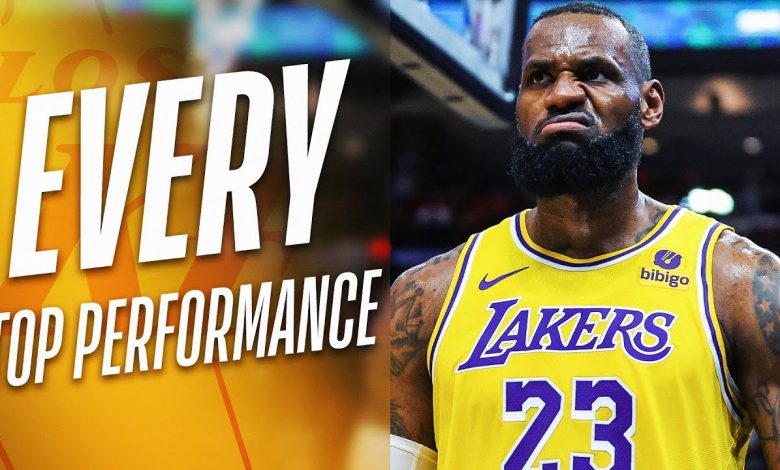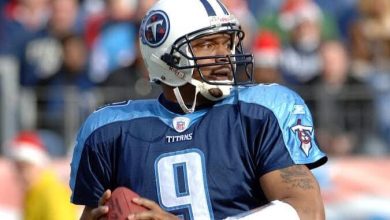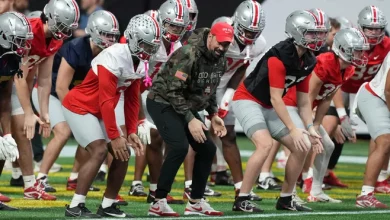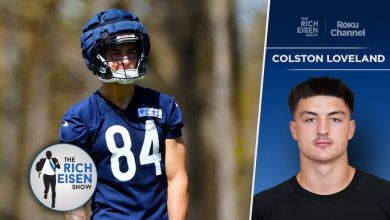However, upon reaching out to the then-face-of-the-franchise LeBron James, things turned out for the better.

In every franchise’s story, there’s a turning point. A singular moment where doubt and uncertainty hang heavy, and the future of the team feels like it’s teetering on the edge. For the Los Angeles Lakers in the early 2020s, that moment arrived during a time of chaos, inconsistency, and unmet expectations. But then came the call—a conversation with the face of the franchise, LeBron James, that would shift the tide and change everything.
A Franchise at a Crossroads
The Lakers were fresh off a disappointing stretch. After winning the 2020 NBA Championship in the Orlando Bubble, hopes were sky-high. But what followed was inconsistency: a slew of injuries, locker room tension, and a lack of chemistry from ever-changing rosters filled with veterans past their prime and young talent struggling to adapt.
Fans were frustrated. Critics were vocal. And internally, the Lakers organization found itself asking hard questions. Was LeBron still the answer? Was the championship window already closing? Had they failed to maximize his twilight years?
It was during one of these crossroads—when uncertainty hovered and the media noise was deafening—that a pivotal decision was made: reach out to LeBron James directly. Not as a superstar. Not as a logo. But as the leader.
The Conversation That Sparked a Movement
According to multiple inside sources, the Lakers’ front office, led by GM Rob Pelinka and trusted advisors, sought LeBron’s counsel not just on personnel but on culture. What was broken? What needed fixing? And most importantly—was he still all-in?
The answer? A resounding yes.
But LeBron wasn’t just interested in playing his way through the storm. He wanted to build through it. He wanted accountability. Commitment. And players who understood the weight of the purple and gold.
That conversation transformed everything. It wasn’t about dictating roster moves—it was about aligning purpose. LeBron emphasized three key pillars moving forward: culture, clarity, and commitment.
“I’m not here to cruise to retirement,” he reportedly told Pelinka. “I’m here to compete. To win. To leave something behind.”
Culture Reset
The first thing to change was the locker room dynamic. The Lakers cleared out players who didn’t mesh with the team-first mentality. LeBron pushed for a culture built on consistency, effort, and mentorship. He started spending more time mentoring younger players like Austin Reaves and Max Christie, setting an example on and off the court.
New additions had to fit this vision. It wasn’t just about stats—it was about mentality. Could they defend? Could they sacrifice? Could they lock in during crunch time? Players like Jarred Vanderbilt and Rui Hachimura emerged not just because of talent, but because they bought in.
Coaching Chemistry
While Darvin Ham had the trust of the front office, LeBron’s renewed commitment also opened doors to honest communication. He was no longer operating from above—he was within the system. Together, Ham and LeBron worked out lineups, late-game scenarios, and ways to unlock Anthony Davis’ dominance.
LeBron’s role evolved. He wasn’t just the engine—he was the mechanic, too. Reading defenses, communicating with the bench, and orchestrating the flow even when he wasn’t on the floor.
The Davis Factor
Perhaps the most important part of this cultural shift was unlocking Anthony Davis.
LeBron’s direct outreach to Davis was one of leadership over ego. He empowered AD to take the reins on defense and embrace being “the guy” on many nights. It was LeBron who reportedly said:
“I’ve carried the torch. Now it’s yours to hold—and I’ll help you shine it.”
That trust gave Davis the confidence to dominate again. He started playing through injuries, anchoring the defense, and reestablishing himself as one of the top two-way players in the league. LeBron’s willingness to step back created space for Davis to step forward.
Off the Court, On a Mission
Reaching out to LeBron didn’t just benefit the on-court product—it also revitalized the Lakers’ presence in the community and league image. LeBron launched more youth initiatives through the LeBron James Family Foundation in Los Angeles, tied in Lakers branding, and invited teammates to participate.
The franchise was no longer defined solely by wins and losses—it was about impact, unity, and legacy.
Internally, staff members reported that practices felt different. There was more focus. Less ego. More film study. More dialogue between players and coaches. Even training staff felt the ripple effect—more attention to injury prevention, nutrition, and mental wellness.
Building for the Present—and the Future
One of the most underrated aspects of that conversation was LeBron’s long-term vision.
While some assumed he’d jump ship once the going got tough, his renewed engagement with the Lakers’ direction was about more than the next ring—it was about preparing for life after LeBron. He took interest in player development, scouting reports, and organizational structure.
He even began mentoring younger prospects within the Lakers’ G-League affiliate, the South Bay Lakers. One story noted that he showed up unannounced to a practice, surprising the entire roster and spending two hours with the coaching staff reviewing tape.
LeBron’s voice also carried weight in free agency. His phone calls helped land key veteran additions who may have overlooked L.A. during down years. His belief in the process became contagious.
The Result: Redemption and Revival
Fast-forward, and the Lakers are no longer treading water—they’re competing.
They’ve reestablished a defensive identity. They’ve embraced player development. They’ve built a roster that blends stars with role players who know their job. And perhaps most importantly, they’ve given LeBron what he asked for: a chance to win his way.
It’s not perfect. There are still challenges. Injuries, age, and a stacked Western Conference present constant obstacles. But what separates this Lakers squad from those in recent years is the spirit—they play for each other, they grind, and they respect the weight of the jersey.
All because of one conversation.
Final Thoughts: The Power of Leadership
The decision to reach out to LeBron James was more than a front office formality—it was a shift in philosophy. It signaled humility, collaboration, and a recognition that greatness requires alignment from top to bottom.
In an era where superstar empowerment sometimes walks the line of overreach, the Lakers struck the right balance. They didn’t hand over the keys—they asked the driver where the team should go. And in turn, LeBron stepped up not just as the face of the franchise—but as its heartbeat.
That moment—quiet, unseen, and behind the scenes—might never show up on a highlight reel.









